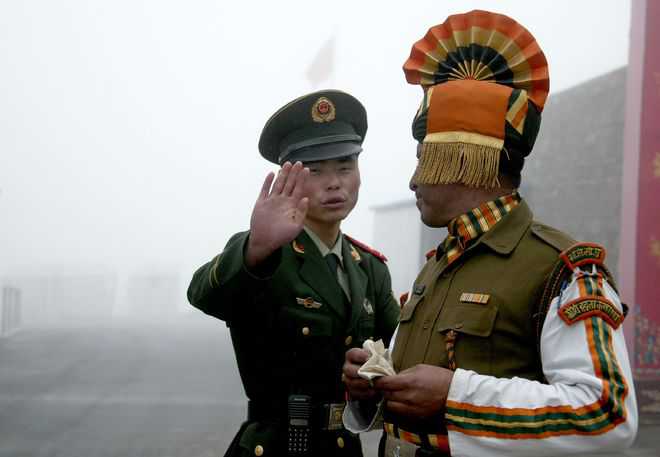Demarcating Line of Actual Control the only option to maintain peace at border

With both India and China refusing to back off from Doklam area in Bhutan, the standoff between the two armies is nowhere near its end.
Ajay Banerjee
Tribune News Service
New Delhi, July 15
Diplomacy may prevail upon armies of India and China to withdraw from the standoff at the Doklam Plateau in Bhutan. However, a belligerent China, militarily emboldened after the free run in the South China Sea, could yet again threaten Bhutan or other countries.For India, the demarcation of the 3,488-km-long Line of Actual Control, the de-facto boundary between India and China, is the solution. One option is to use the watershed principle. The natural flow of water downwards from a ridgeline is the international rule for demarcation. New Delhi would be ready to accept it for the entire boundary — Karokaram pass the northernmost tip of J&K to the tri-junction of India-China-Myanmar in the East.In April 1960, Chinese Premier Zhou Enlai offered to resolve on ‘present actualities’, meaning India keeps NEFA (now Arunachal Pradesh) while China keeps Aksai Chin, the northeast edge of J&K. This is also the largely accepted alignment of the LAC.No snap in ties despite tensionNew Delhi and Beijing have had all channels open at the diplomatic level. Other than PM Narendra Modi and President Xi Jinping meeting in Hamburg, Germany, the specified diplomatic channel laid by protocol under a 2012 agreement has been activated. National Security Adviser Ajit Doval is going to China on July 28 for a meeting of BRICS NSAs.China tried to deflect attentionBy naming India in its statements, China was deflecting attention from the fact that it was the aggressor in Bhutan, which has a population of 7.5 lakh, less than half of China’s 20 lakh strong armed forces.On June 5-6, Chinese troops broke the bunkers of Bhutan Army and started digging for a road across the Torsa nullah in the Doklam Plateau. The land east of this Nullah leads to the ‘Jampheri ridge’, which is the military target of China.The ridgeline offers a view of sensitive Siliguri corridor of India. The present Chinese road ends at Asan, 20 km north of the disputed spot. Bhutan and China in 2012 signed a pact to not disturb the disputed sections of the boundary, including Doklam.
Beijing emboldened
It tasted a free run in the South China Sea. It created artificial islands to claim territory of others and subsequently build air bases on these islands. Other than seeking ‘freedom of navigation at sea’ under the UN mandate, no country physically stopped Beijing. “China’s three air bases in the Spratlys and another on Woody Island in the Paracels will allow Chinese military aircraft to operate over nearly the entire South China Sea,” said a report of the Asia Maritime Transparency Initiative launched by the Centre for Strategic and International Studies.Played games with British tooBetween 1850 and 1920, London leaned on China to keep Russia out of Tibet. Between 1846 and 1914, the British made five failed attempts to demarcate the boundary. Sir Francis Younghusband, who led the British military expedition to capture Tibet in 1904, writes in his book ‘India and Tibet’ about the attempts to demarcate Doklam in 1895. “Come together at Yatung, decide upon the best place for beginning operations… and agree upon a date for starting together on the work of demarcation,” writes Sir Francis. The demarcation was never completed.
